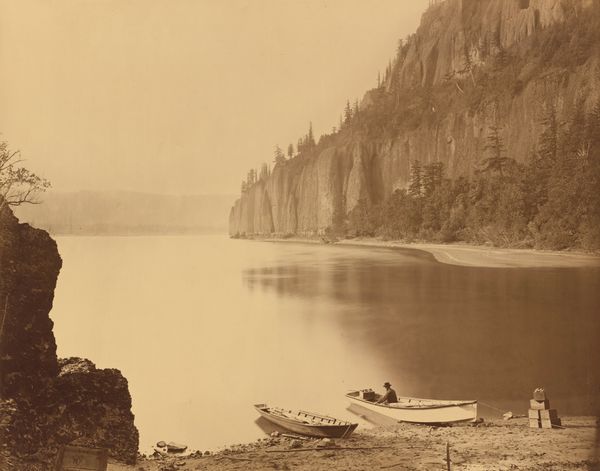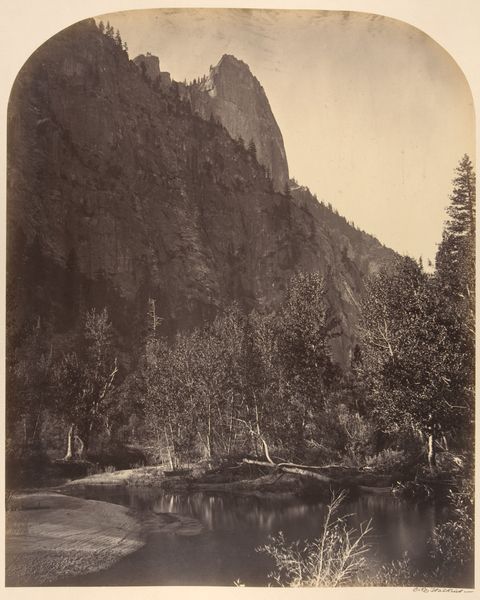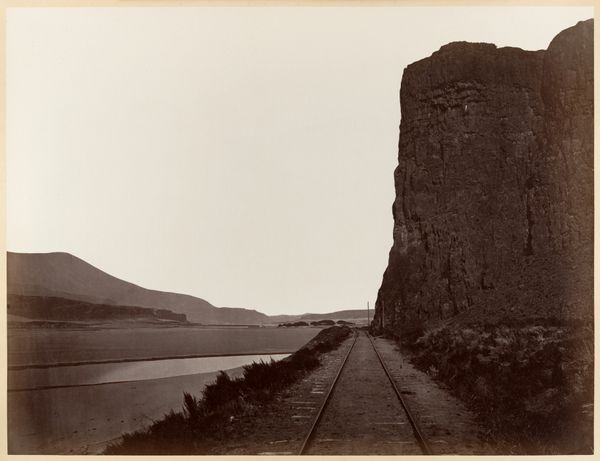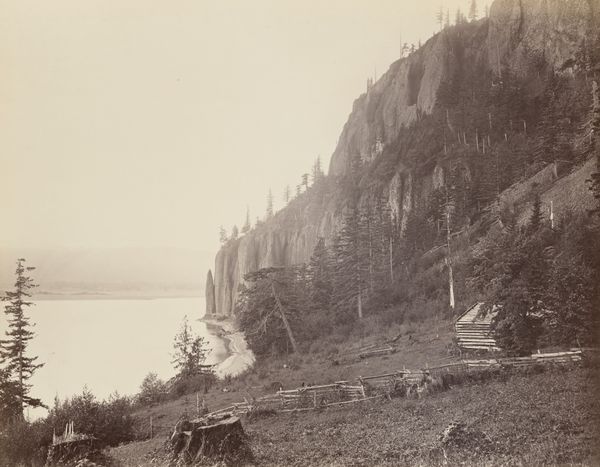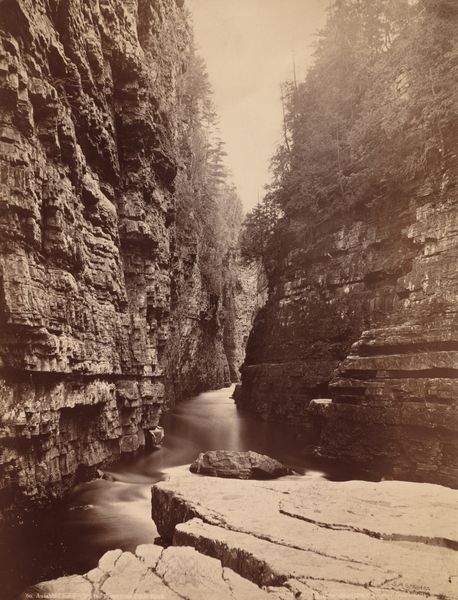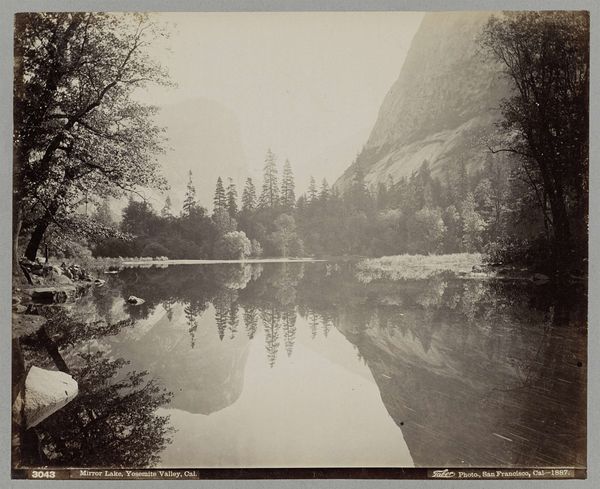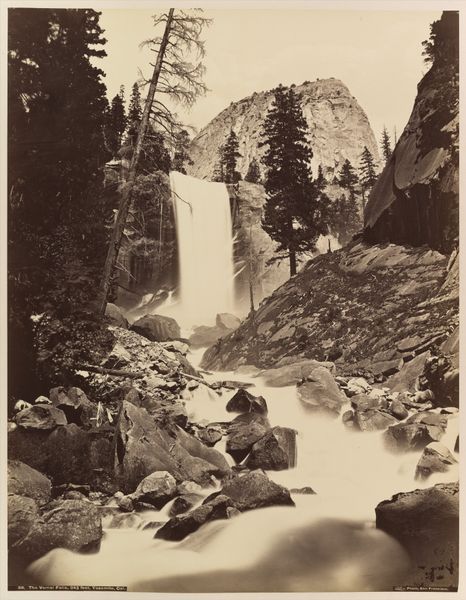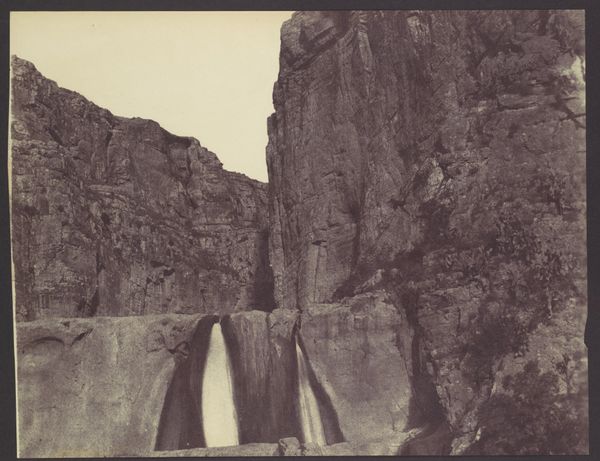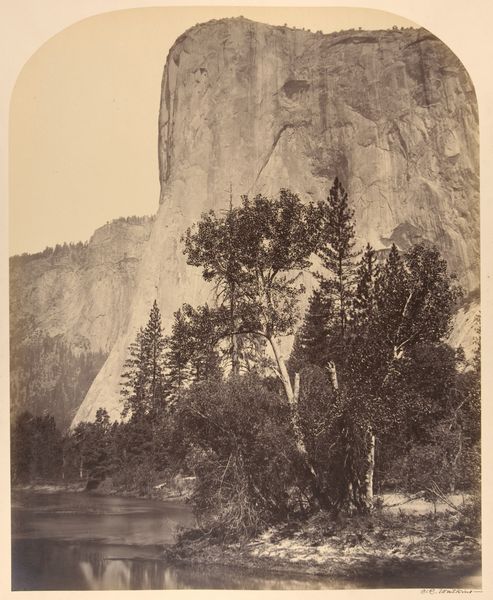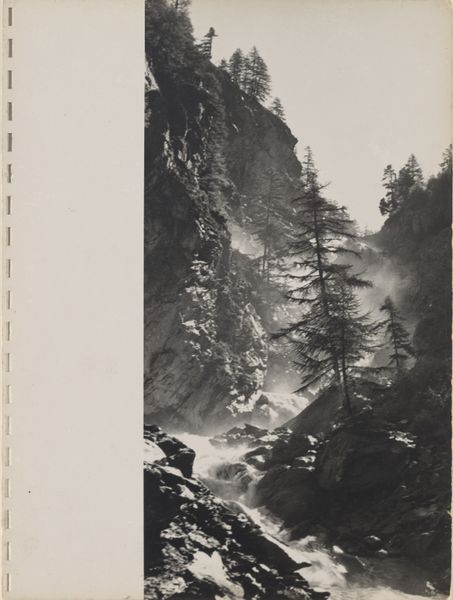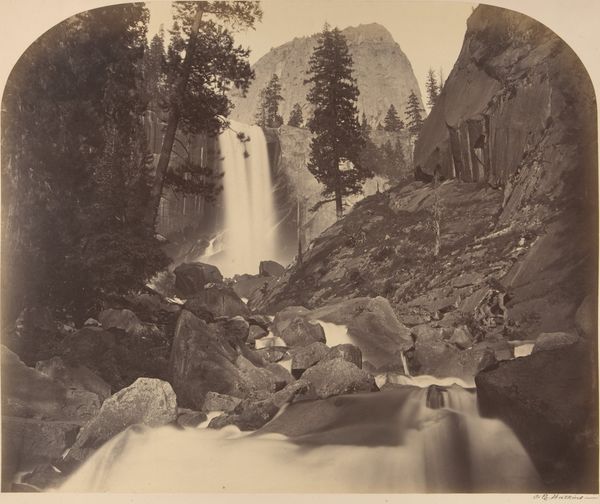
print, plein-air, photography, gelatin-silver-print
# print
#
plein-air
#
landscape
#
nature
#
outdoor photography
#
photography
#
outdoor scenery
#
geometric
#
gelatin-silver-print
#
monochrome photography
#
hudson-river-school
#
nature
#
monochrome
Dimensions: Image: 52.1 x 39 cm (20 1/2 x 15 3/8 in.) Frame: 76.2 x 63.5 cm (30 x 25 in.)
Copyright: Public Domain
Curator: This is a gelatin silver print by Carleton Watkins, dating to 1867. It is titled *Cape Horn, Columbia River, Oregon* and forms part of the Metropolitan Museum’s collection. Editor: What a powerful composition. The sheer scale of those cliffs reflected in the still water is breathtaking, yet somehow serene. It makes me feel very small. Curator: Watkins, working in the early days of photography, understood the power of landscape to shape and reflect national identity. His work, particularly these images of the American West, were instrumental in promoting the idea of manifest destiny. He received government support due to his skill. Editor: Ah, so we're looking at a visual manifestation of 19th-century expansionist ideology then? It's fascinating how such a tranquil image could also be interpreted as an assertion of dominance. The stark monochrome seems to amplify this sense of stark, almost unchallenged power. The single spire reaching up resonates with ancient architectural symbols too... Curator: Precisely. The sublime nature present connects with a cultural moment where artists depicted nature not merely as a backdrop, but as embodying moral and spiritual significance. This builds on transcendentalist thought too, finding God in the grand scheme. Watkins wasn’t just documenting; he was framing a narrative about the American landscape itself. Editor: I find myself drawn to the textures within the monochromatic scale, from the coarse cliffside to the glassy river. Curator: Watkins used an enormous camera, resulting in incredibly detailed images for the time. It's interesting to note how photography, even in its nascent form, was already being employed to both celebrate and perhaps even sanitize the complexities of westward expansion. Editor: Sanitize, definitely a strong and interesting point there, yes. It is very controlled and presented here. Thanks for offering that rich and interesting interpretation; it makes this landscape more than just scenery for sure. Curator: My pleasure. Considering the Hudson River School origins mixed with expansion, you notice how this work functions as a carrier of a particular, ideologically charged cultural narrative, and for this it continues to spark relevant conversations today.
Comments
No comments
Be the first to comment and join the conversation on the ultimate creative platform.
